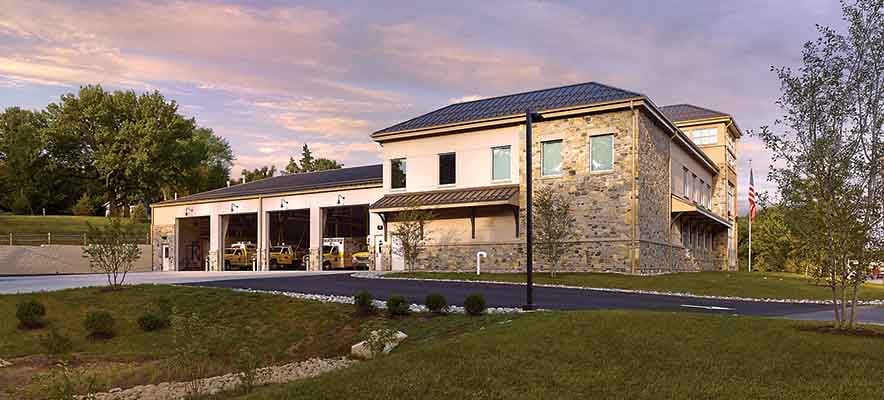Access to the Firehouse
Firefighting has a deep and proud tradition in southeastern Pennsylvania. In 1736, Benjamin Franklin created a Philadelphia firefighting club in which members pledged to help each other fight fires that struck their homes or businesses. Fire companies and clubs soon popped up all over the city. Ten score and 13 years later and 20 miles to the west, the progeny of one of these fire companies, the East Whiteland Volunteer Fire Association, was established to provide fire, rescue, and EMS services to East Whiteland Township.
Because the community has grown considerably over the past few decades, the old firehouse needed updating. In 2013, local businesses created a committee to help raise funds and build a new $5 million firehouse.
When starting the planning process for the new building, the fire association knew it wanted a more efficient and effective access control system, says Chris Strauss, deputy fire chief at East Whiteland. Strauss is a locksmith by trade, and he had helped the organization with its access control solution at the previous building.
In the past, Strauss notes that he has seen the issues that can creep up when contractors implement access control plans. He says he was confident he could make that process flow more smoothly when it came to the new firehouse construction.
Strauss’s company, Great Valley Lockshop, acted as the integrator on the project. Strauss chose Vanderbilt’s Bright Blue access control system, which he had previously installed at other firehouses.
The main panel comes ready to use and is equipped to read up to 32 doors—Strauss notes that most systems service only four to eight doors and East Whiteland has 28 doors on its system. Because East Whiteland is made up of both volunteer and career firefighters, it has a lot of turnover, making key cards an attractive option. These can be easily deactivated, as opposed to traditional hardware locks and keys.
The firehouse operates 24/7, with at least three to four people in the building at all times. Every firefighter has access to common areas, including the kitchen and gym, as well as a report-writing room. Because visitors and temporary contract workers are uncommon, there is no special grouping for this type of access level. However, some officers have access to areas, such as the engineer’s storage room and ambulance storage room. All privilege levels are managed through a Web portal.
From any desktop computer, Strauss and two other fire officials are able to enter a username and password into the Vanderbilt administrative portal. From there, they can see who is coming out of doors and at what time. In the portal, they can also raise or lower privilege levels, as well as see any issues with the hardware, such as a dead battery.
The system isn’t designed for smart devices yet, Strauss notes, but he’s working on getting remote access to the fire department’s server so he can log in to the system from a home computer.
The Bright Blue system also has a lockdown feature. Whenever the firehouse receives an emergency dispatch call from 911, Strauss says first responders may forget to close the garage door as they race off in the firetruck. “Then anybody can just walk in off the street, because there’s nobody in the building at that point,” he notes.
Strauss says that East Whiteland is working to set up the lockdown feature, which will automatically lock the bay doors once the firetruck leaves the station.
During the security design process, Strauss says that simple things like access control tend to be overlooked in favor of more glamorous security technologies.
“It always seems like everybody concentrates on the bells and whistles and the high-end access systems and the cameras and all that, but security really comes down to the lock that’s on the door,” he says.
When seconds count, having easy access throughout the firehouse is a must. “Without having to fumble for keys, the card system allows you to move freely about the building and still keep the premises secure,” Strauss says.
For more information: Brian P. Mathieu, [email protected], 973.316.3907
